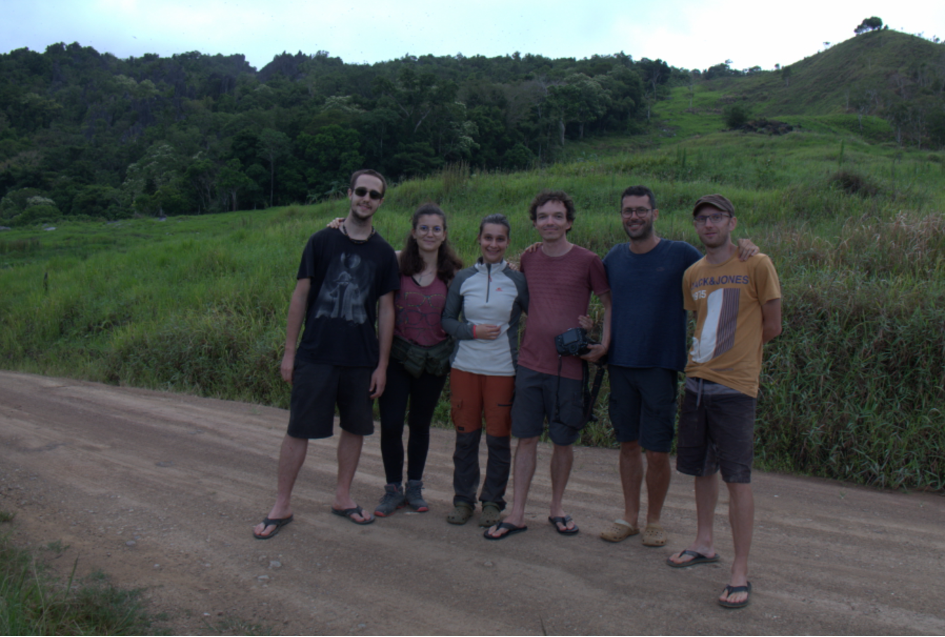Fieldtrip in New Caledonia for Elise’s thesis
So many lichens growing on leaves!

From October 30 to November 21, as a research collaboration with New Caledonian Agronomic Institute (IAC), French Association of Lichenology (AFL) and UMS Patrinat (OFB/MNHN/CNRS), Elise Lebreton (FRIA PhD Student) and Antoine Lespagnol (scientific collaborator) sampled lichens and leaves in Nouvelle Caledonie.
New Caledonia is one of the smallest biodiversity hotspots in the world. This territory is famous for its rich flora, with one of the highest endemism rates in the world (78.7% according to Véron et al. 2021). Nevertheless, the knowledge about the fungal biodiversity of the archipelago is still fragmentary. We currently know only 10% of the Caledonian fungus.
A part of the fungus concerns lichenized fungi (lichens). Among the lifestyle studied in lichens (growth on rocks, on tree bark etc...), foliicolous lichens (life cycle on tree leaves) had been poorly studied in New Caledonia until the collections of Kalb and Kalb (1994) on some localities.
The objectives of the field mission are:
- To explore “Grande Terre” in order to find new locality with foliicolous lichens (other than what is already known)
- Update the checklist of foliicolous lichens established by Lücking & Kalb (2001) and continue the inventory of other lichens (microlichens, small opportunistic collections)
- Use molecular tools on collected specimens to produce phylogeny of Gomphillaceae (family of lichens mainly foliicolous)
New Caledonia is known for its bushy landscapes with red ground.
But this is not the best place to find foliicolous lichens, which prefer preserved humid forests. Rainforest and cloud forest are not many left today because of deforestation. That's why it was sometimes necessary to drive and walk long hours to reach these environments.
The field mission was a success with great contacts on site and thousands of interesting lichens to study in Liege !